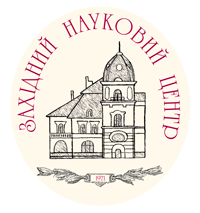Khrystyna KHRUSHCHYK1,2, Marta CHAVA1, Veronika PIHEL1, Julian KUBISZTAL2, Vasyl KORDAN1, Oksana HERTSYK1, Malgorzata KAROLUS2, Lidiya BOICHYSHYN1
1Ivan Franko National University of Lviv, Kyryla i Mefodia Str., 6, 79005 Lviv, Ukraine e-mail: khrystyna.khrushchyk@us.edu.pl
22University of Silesia in Katowice, Institute of Materials Engineering, 75 Pulku Piechoty, 1A, 41-500 Chorzow, Poland
DOI: https://doi.org/10.37827/ntsh.chem.2025.78.236
CORROSION RESISTANCE OF THERMOMODIFIED AMORPHOUS ALLOY Al87Y4Gd1Ni8 IN THE TEMPERATURE RANGE 624-643 К
In this work, the changes in the chemical composition of the surface of the amorphous metal alloy Al87Y4Gd1Ni8 as a result of isothermal annealing for two minutes in the air atmosphere at temperatures T1 = 624±2, T2 = 633±2, T3 = 643±2 K, respectively, were studied by scanning electron microscopy. The annealing temperatures were determined from DSC (β=20 K/min) curves. The open circuit potentials were determined by the OCP method, which for this alloy are –0,618, –0,650, and –0,717 V, respectively. The following electrochemical parameters were determined by electrochemical impedance spectroscopy: the electrical equivalent elements used in the models are solution resistance (R1), charge transfer resistance (R3) and corrosion capacitor of the medium/corrosion products interface (CPEdl), charge transfer resistance (R3) in 0,3% aqueous NaCl solution. It was found that with increasing annealing temperature, the values of solution resistance (R1), passive film resistance (R2), and charge transfer resistance (R3), increase, indicating the formation of protective oxide layers on the surface of the alloys. The influence of short-term annealing for 2 min in the temperature range of 624–643 K, which corresponds to the third stage of crystallisation, on the change in the electrochemical properties of the amorphous strip alloy Al87Y4Gd1Ni8 was investigated and the chemical composition of the amorphous metal alloys surface was found to change.
Keywords: amorphous metal alloys, aluminium, thermal modification, electrochemical parameters.
References:
-
1. Louzguine-Luzgin D. V., Ketov S. V., Trifonov A. S., Churymov A. Yu. Surface structure and properties of
metallic glasses. J. Alloys Compd. 2018. Vol. 742. P. 512–517.
https://doi.org/10.1016/j.jallcom.2018.01.290.
2. Wang Z., Wang X., Xu C., Zhao Y., Qu X. Hybrid nanostructured aluminum alloy with super-high strength. NPG Asia
Materials. 2015. Vol. 7. P. 1–8. https://doi.org/10.1038/am.2015.129.
3. Nizameiev M., Hertsyk O., Boichyshyn L. Physicochemical properties of amorphous and nanocrystalline alloys:
Structure, physical-mechanical and corrosion properties of amorphous and nanocrystalline iron-based alloys. ‒ LAP
Lambert Academic Publishing, 2022. ‒ 292 р.
4. Hertsyk О.М., Kovbuz М.О., Pereverzeva T.H., Borysyuk А.K., Boichyshyn L.M. Influence of heat treatment and
variable magnetic fields on the chemical resistance of amorphous alloys based on iron. Mater. Sci. 2014. Vol.
50(3). P. 454–460. https://doi.org/10.1007/s11003-014-9742-3.
5. Ivanov Y.P., Meylan C.M., Panagiotopoulos N.T., Georgarakis K., Greer A.L. In situ TEM study of the
crystallization sequence in a gold-based metallic glass. Acta Materialia. 2020. Vol. 196. P. 52–60.
https://doi.org/10.1016/j.actamat.2020.06.021
6. Ma H., Cheng X., Li Y., Chen S. Impedance investigation of the anodic iron dissolution in perchloric acid
solution. Corrosion Science. 2002. Vol. 44(6). P. 1177–1191. https://doi.org/10.1016/S0010-938X(01)00145-7.
7. Warski T., Kolano-Burian A., Garstka K., Nabialek M., Jeż B. Influence of Cu content on structure and magnetic
properties in Fe86-xCuxB14 alloys. Materials. 2020. Vol. 13. Article No. 1451. https://doi.org/10.3390/ma13061451.
8. Lashgari H.R., Wang G., Xu J., Zhang Y., Zhang H.F., Li J.S. Thermal stability, dynamic mechanical analysis and
nanoindentation behavior of FeSiB(Cu) amorphous alloys. Materials Science and Engineering: A. 2015. Vol. 626. P.
480–499. https://doi.org/10.1016/j.msea.2014.12.097.
9. Lazanas A.Ch., Prodromidis M.I. Electrochemical Impedance Spectroscopy A Tutorial. ACS Measurement Science Au.
2023. Vol. 3(3). P. 162–193. https://doi.org/10.1021/acsmeasuresciau.2c00070.
10. Pajkossy T., Jurczakowski R. Electrochemical impedance spectroscopy in interfacial studies. Current Opinion in
Electrochemistry. 2017. Vol. 1(1). P. 53–58. https://doi.org/10.1016/j.coelec.2017.01.006.
How to Cite
KHRUSHCHYK Kh., CHAVA M., PIHEL V., KUBISZTAL Ju., KORDAN V., HERTSYK O., KAROLUS M., BOICHYSHYN L. CORROSION RESISTANCE OF THERMOMODIFIED AMORPHOUS ALLOY Al87Y4Gd1Ni8 IN THE TEMPERATURE RANGE 624-643 К. Proc. Shevchenko Sci. Soc. Chem. Sci. 2025. Vol. 78. P. 236-243.

